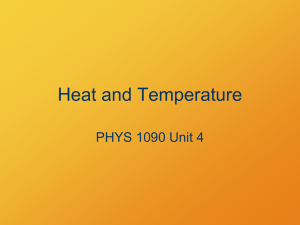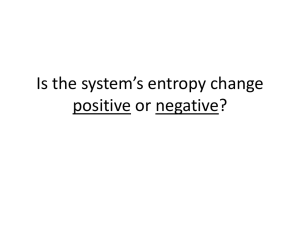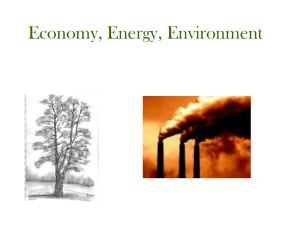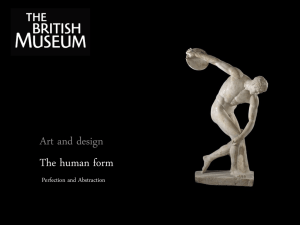Lecture – 1 Game Evolution and Game History
advertisement
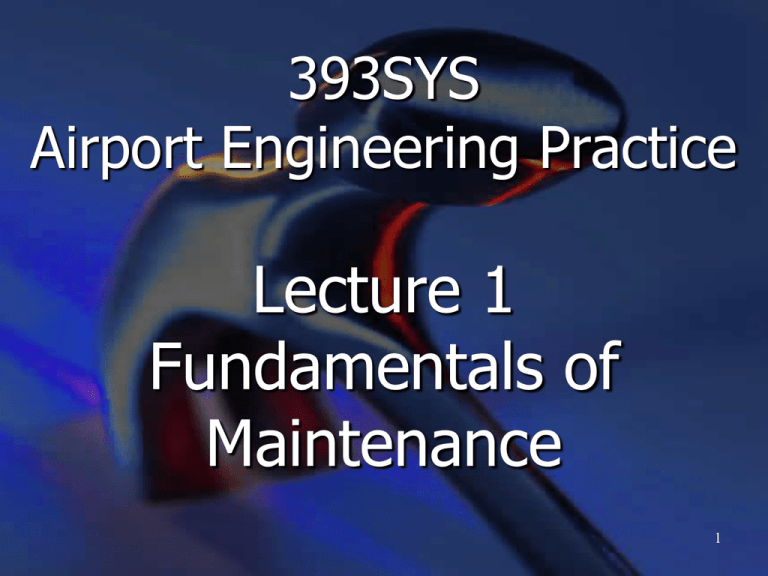
393SYS Airport Engineering Practice Lecture 1 Fundamentals of Maintenance 1 Airport Engineering Practices Course Examiner : Andrew LAYFIELD Lecturers : Andrew LAYFIELD and Ivan LI Week Lecturer Details 1-4 Andrew LAYFIELD Room P6955 Tel. 2784-4772 Email : dcandrew@cityu.edu.hk Ivan LI 5 - 13 Room P6855 Tel. 2788-8637 Email : dcivan@cityu.edu.hk 2 Airport Engineering Practices Course Text Book Publisher : McGraw-Hill Edition : 1st, 2004 ISBN : 007142251X ISBN : 978-0771422512 Covers aircraft maintenance programme development and operations from a managerial as well as a technical perspective. 3 Airport Engineering Practices Indicative Syllabus Week # Topic Reading Assignment 1 Fundamentals of Maintenance Chapters 1 & 2 2 Aviation Industry Certification Requirements Chapter 4 3 Documentation for Maintenance Chapter 5 4 Requirements of Maintenance Programme Chapter 6 5 Engineering Services 6 Aviation law / Airline maintenance Costs 7 Quality Assurance 8 ISO9000 Quality Standard TBA 9 Quality Management Systems TBA 10 Quality Audits TBA 11 Quality Control Chapter 18 12 Statistical Quality Control Tools & Techniques 13 Reliability Chapters 8 and 9 TBA Chapter 17 TBA Chapters 19 & n3 4 Airport Engineering Practices Assessment Exam : 50% Course Work : 50% Coursework : Andrew ~ 15% Test (Week 5) Ivan ~ 35% TBA 5 1.0 Why We Have to Do Maintenance 6 1.0 Why We Have to Do Maintenance The Three Laws of Thermodynamics 1st Law: Energy can neither be created or destroyed 2nd Law: All spontaneous events act to increase total entropy . 3rd Law: Absolute zero is removal of all thermal molecular motion 7 1.0 Why We Have to Do Maintenance The second law of thermodynamics states that, in a closed system, the entropy increases. Cars rust, dead trees decay, buildings collapse; all these things are examples of entropy in action, the spontaneous movement from order to disorder. 8 1.0 Why We Have to Do Maintenance S=Q/T S = Entropy Q = the heat content of the system T = the temperature of the system There is also another formula for entropy which uses probabilities – the probability that a particular state of a system will occur at random. Highly ordered states are very improbable. The main point here is that entropy is something that can be quantified ! 9 1.0 Why We Have to Do Maintenance Note that – - the increase in entropy gives a direction to time because entropy increases with time - recognizing ordered and disordered states is a function of human consciousness. 10 1.0 Why We Have to Do Maintenance Aircraft systems degrade with time – they wear out ! Their entropy increases. 11 1.0 Why We Have to Do Maintenance The Role of the Engineer Perfect systems can be designed on paper but perfect systems cannot be built in the real world. A design engineer may be limited from making the perfect design by – imperfections in the natural world technology ability economics Very often there is just not enough money to build a (nearly) perfect system. 12 1.0 Why We Have to Do Maintenance However, the designer is obliged to build the best system possible within the constraints which exist. A project manager for a new aircraft will be responsible for the project budget. He will ask his design manager, “how much will it cost to build this ?” The design manager might say $120M. The project manager, however, might be limited to a budget of $100M for the production cost of each of the new aircraft. In this case, the design manager must redesign the new aeroplane so it can be built for $100M. 13 1.0 Why We Have to Do Maintenance That usually means – reduced tolerances, cheaper materials, and, consequently, more entropy. More entropy in the design will mean more maintenance is required. The design engineer’s main problem is then to minimize (not eliminate) the entropy of the system he or she is designing while staying within the required constraints. 14 1.0 Why We Have to Do Maintenance The Role of the Mechanic Entropy exists in every system and the entropy of a system is always increasing. This means not only that a real system which starts off being new will have some entropy already built into it, but that the entropy will increase with time. Some components or systems will deteriorate from use, or even lack of use. Misuse by an operator may cause some deterioration. Therefore, while the engineer’s job is to minimize the entropy of a system during design, the mechanics job is to fight the continual increase in the entropy of a system during its lifetime. 15 1.0 Why We Have to Do Maintenance This graph shows the level of perfection of a typical system : 100% ENTROPY ATTAINABLE LEVEL OF PERFECTION 100% perfection is at the very top of the y-axis. The x-axis shows time. PERFECTION NATURAL DECAY OF SYSTEM (Increasing Entropy) The solid curve shows the level of perfection of a real world system. Note that the curve turns downwards with time. TIME 16 1.0 Why We Have to Do Maintenance When the system deteriorates to some lower level of perfection, it is necessary to perform some corrective action - adjusting, servicing, etc. 100% ENTROPY PERFECTION ATTAINABLE LEVEL OF PERFECTION NATURAL DECAY OF SYSTEM (Increasing Entropy) TIME System needs to be corrected when it reaches some lower level. 17 1.0 Why We Have to Do Maintenance In other words, at some point, we have to perform some maintenance to restore the system to its designed-in level of perfection. We need to reduce the entropy to its original level. This is called preventative maintenance and is usually performed at regular intervals. This is done to prevent deterioration of the system to an unusable level. Preventative maintenance is also sometimes referred to as s scheduled maintenance. This schedule could be daily, every flight, every 200 flight hours, or every 100 cycles ( a cycle is a takeoff and landing). 18 1.0 Why We Have to Do Maintenance Considering the number of components on a modern aircraft, maintenance is a complex, on-going process. For this reason, we will see that aircraft maintenance must be approached systematically. Definition systematic adjective done using a fixed and organized plan e.g. “the systematic collection and analysis of information” systematically adverb 19 1.0 Why We Have to Do Maintenance This graph shows the system restored to its normal level (curves a and b): 100% ENTROPY DESIGNED-IN LEVEL OF PERFECTION a At other times the system breaks down completely (curve d). b PERFECTION (OR RELIABILITY) Sometimes the system can deteriorate rapidly in service to a low level of perfection (curve c). c POINT AT WHICH SCHEDULED MAINTENANCE IS DONE d TIME In these cases, the maintenance actions require extensive testing, trouble shooting, 20 adjustment. 1.0 Why We Have to Do Maintenance This graph shows the system restored to its normal level (curves a and b): Very often, the 100% ENTROPY a b PERFECTION (OR RELIABILITY) replacement or complete overhaul of parts or subsystems is required. DESIGNED-IN LEVEL OF PERFECTION c POINT AT WHICH SCHEDULED MAINTENANCE IS DONE d TIME Since these breakdowns occur at various unpredictable intervals, the maintenance actions required to correct the problems are referred to as unscheduled maintenance. 21 1.0 Why We Have to Do Maintenance Reliability 100% ENTROPY a b PERFECTION (OR RELIABILITY) The level of perfection of a system can also be referred to as the reliability of the system. DESIGNED-IN LEVEL OF PERFECTION c POINT AT WHICH SCHEDULED MAINTENANCE IS DONE d TIME The designed-in level of perfection is known as the inherent reliability of that system. 22 1.0 Why We Have to Do Maintenance Redesign IMPROVED RELIABILITY DUE TO REDESIGN DESIGNED-IN LEVEL OF RELIABILITY 100% ENTROPY B A C D RELIABILITY POINT AT WHICH SCHEDULED MAINTENANCE IS DONE TIME In this diagram, curve A is one of the original curves from the first diagram. However, the system has now been redesigned to a higher level of perfection – see curves B, C and D. 23 1.0 Why We Have to Do Maintenance IMPROVED RELIABILITY DUE TO REDESIGN DESIGNED-IN LEVEL OF RELIABILITY 100% ENTROPY B A C D RELIABILITY POINT AT WHICH SCHEDULED MAINTENANCE IS DONE TIME The redesigned system now starts off at a higher level of reliability. However, over time, the system will still deteriorate from this new initial level of perfection. 24 1.0 Why We Have to Do Maintenance IMPROVED RELIABILITY DUE TO REDESIGN DESIGNED-IN LEVEL OF RELIABILITY 100% ENTROPY B A C D RELIABILITY POINT AT WHICH SCHEDULED MAINTENANCE IS DONE TIME The rate of decay may change as a result of the redesign. If the decay is steeper, as in (B), the point at which preventative maintenance needs to be performed might occur sooner. 25 1.0 Why We Have to Do Maintenance IMPROVED RELIABILITY DUE TO REDESIGN DESIGNED-IN LEVEL OF RELIABILITY 100% ENTROPY So, for case (B), maintenance will be needed more often. B A C D RELIABILITY POINT AT WHICH SCHEDULED MAINTENANCE IS DONE TIME The inherent reliability is increased but more maintenance is required to maintain that level of reliability. 26 1.0 Why We Have to Do Maintenance IMPROVED RELIABILITY DUE TO REDESIGN DESIGNED-IN LEVEL OF RELIABILITY 100% ENTROPY B A C D RELIABILITY POINT AT WHICH SCHEDULED MAINTENANCE IS DONE TIME Conversely, if the decay rate is the same as before, as in case (C), or less steep as in case (D), then the maintenance interval would be increased and the overall amount of preventative maintenance might be reduced. 27 1.0 Why We Have to Do Maintenance The question to be considered here is : Does the reduction in maintenance justify the cost of the redesign ? This is a question for the designers to consider, not the maintenance people. One of the major factors in redesign is cost. This graph shows two opposing relationships : INCREASE IN PERFECTION IS LOGARITHMIC INCREASE IN COST IS EXPONENTIAL PERFECTION VS COST 28 1.0 Why We Have to Do Maintenance INCREASE IN PERFECTION IS LOGARITHMIC INCREASE IN COST IS EXPONENTIAL PERFECTION VS COST The upper curve is logarithmic. It represents the increasing perfection attained with more sophisticated design efforts – the closer we get to perfection, the harder it is to make a substantial increase. The lower curve represents the cost of the efforts to improve the system. This is an exponential curve. The more we try to approach perfection, the more it is going to cost us. 29 1.0 Why We Have to Do Maintenance INCREASE IN PERFECTION IS LOGARITHMIC INCREASE IN COST IS EXPONENTIAL PERFECTION VS COST Designers are limited in their goal of perfection by both entropy and costs. 30 1.0 Why We Have to Do Maintenance Failure Rate Patterns Not all systems or components fail at the same rate nor do they all exhibit the same pattern of wear out and failure. This is important because the nature of the maintenance to be performed on these systems and components is related to their failure rates and failure patterns. United Airlines did some studies on lifetime failure rates and found six basic patterns. These are shown in the following table. Note : 1. The vertical axes show failure rates, not reliability ! The higher the vertical position, the worse the failure rate. 2. The horizontal axes show time. 31 1.0 Why We Have to Do Maintenance A. Infant mortality; constant or slightly rising failure rate; definite wear out period (4 %). B. No infant mortality; slightly rising failure rate; definite wear out period (2 %). C. No infant mortality; slightly rising failure rate; no definite wear out period (5 %). D. Increasing failure rate at outset; constant or slightly rising failure rate; no definite wear out period (7 %). E. No infant mortality; constant failure rate throughout life; no definite wear out period (14 %). F. Infant mortality; constant failure rate throughout life; no definite wear out period 32 (68 %). 1.0 Why We Have to Do Maintenance A. Infant mortality; constant or slightly rising failure rate; definite wear out period (4 %). Curve A shows what is commonly referred to as a “bathtub” curve. This failure rate pattern exhibits a high rate of failure during the early portion of the system’s/component’s life known as infant mortality. Some systems/components exhibit high early failure rates for several reasons – poor design, improper parts, incorrect usage. Once the bugs are worked out and the equipment settles into its “pattern”, the failure rate levels off or rises only slightly over time. Near the end of its life, the curve shows a rapid rise in failure rate as the materials of the system/component reach some kind of physical limit. 33 1.0 Why We Have to Do Maintenance The United Airlines study showed that only about 11 % of the items included in the experiment (curves A, B and C) would benefit from setting operating limits, or from applying a repeated check of wear conditions. The other 89 % would not. Consequently, time of failure, or deterioration beyond useful levels could be predicted on only 11 % of the items. Only components with definite life time limits and/or wear out periods will benefit from scheduled maintenance ! The required maintenance activity for these items can be spread out over the available time to even out the work load. 34 1.0 Why We Have to Do Maintenance For the other 89 %, these items will have to be operated to failure before replacement or repair is done. This is unpredictable and would result in a need for maintenance at odd times – i.e.. unscheduled maintenance. These characteristics of failure make it necessary to approach maintenance in a systematic manner, to reduce periods of unscheduled maintenance. The aviation industry has developed three management techniques for handling in-service interruptions which occur where items must be operated to failure before maintenance can be done. 35 1.0 Why We Have to Do Maintenance 1. Redundant Systems In redundant systems, if one unit fails, one or more backups are available to immediately take over the function : Example 1 Aircraft elevator hydraulic actuator. 36 1.0 Why We Have to Do Maintenance Example 2 Aircraft flight data recorders. 37 1.0 Why We Have to Do Maintenance Another example would be the VHF radios used in commercial aircraft. A unique feature of redundant units also affects the maintenance requirements. If both the primary and the backup units are instrumented such that the flight crew is aware of any malfunction, no prior maintenance check is required. On the other hand, if neither system is so instrumented, maintenance personnel would need to perform some check on both the primary and backup systems. 38 1.0 Why We Have to Do Maintenance 2. Line Replaceable Unit (LRU) An LRU is a component or system that has been designed in such a manner that the parts that most commonly fail can be quickly removed and replaced on the vehicle. The vehicle can then continue in without any significant interruption in service. The failed part can be discarded or repaired later. 39 1.0 Why We Have to Do Maintenance 3. Minimum Equipment List (MEL) This list allows a vehicle to be dispatched into service with certain items inoperative – provided that the loss of the function does not affect the safety and operation of the flight. These items are carefully determined by the aircraft manufacturer and must also be sanctioned by the appropriate regulatory authority during the early stages of vehicle design and test. The manufacturer issues a master minimum equipment list (MMEL) which indicates all equipment and accessories available for a particular aircraft model. The airline then customizes this document to produce its own MEL. 40 1.0 Why We Have to Do Maintenance Many of the MEL items are associated with redundant systems. The MEL allows deferral of maintenance without upsetting the mission requirements. The maintenance, however, must be performed within certain prescribed periods – typically 1, 3, 10 or 30 days. MELs may be part of laptop based computer software for aircraft maintenance. 41 1.0 Why We Have to Do Maintenance Summary Why We Have To Do Maintenance Entropy and the Laws of Thermodynamics The Role of the Engineer The Role of the Mechanic Perfection and Reliability Failure Rate Patterns Management Techniques for In-Service Interruptions – Redundant Systems Line Replaceable Units Minimum Equipment List 42 What you need to know for the exam ! Explain what entropy is and its relationship to the need for maintenance. What is the role of an engineer in the context of entropy ? What is the role of a mechanic in the context of entropy ? With the aid of a sketch diagram, explain the relationship between entropy or perfection and time. With the aid of a sketch diagram illustrating the relationship between reliability and time, explain what is meant by the “designed-in level of perfection” and the “point at which scheduled maintenance is done”. With the aid of a sketch diagram, explain the relationship between perfection and cost. Give some examples of failure rate patterns. What is the “bath tub” curve ? Explain each of the three management techniques which have been developed by the aviation industry for handling in-service interruptions due to equipment failures. What failure rate curves characterize these types 43 of failures ?


